The Corsair Carbide 600Q Case Review: Upside Down But Right On
by E. Fylladitakis on September 12, 2016 8:30 AM EST- Posted in
- Cases/Cooling/PSUs
- Corsair
- ATX
- E-ATX
The Interior of the Corsair Carbide 600Q
The removal of the case’s panels reveals a simple but very interesting interior, with an inversed motherboard tray, meaning that the motherboard is literally upside down. Corsair based this design on the simple concept that the cool air sinks towards the bottom of the case, making the front and bottom fans more effective as intakes and the rear fan more effective as an exhaust. Furthermore, it allowed the designer to seal the top of the case, significantly improving its acoustics performance.
Cleverly, the designer moved the PSU compartment to the top of the case, putting it at the same height as the 5.25" drive bays. As the PSU is much shorter than other system components, such as the motherboard and long GPU cards, moving the PSU and drive bays above the motherboard allowed the designer to greatly shorten the case without having to worry about hardware compatibility problems.
With the exception of the cooling fan blades, everything inside the Carbide 600Q is black. The metallic parts are sprayed with the same satin black paint as with the exterior of the case, as are most of the plastic parts as well. The only exception is the cover of the PSU compartment, which has been treated with a matte varnish finish. One 140 mm intake and one 140 mm exhaust fan are pre-installed inside the Carbide 600Q, with one more 140 mm fan supplied as an extra.
There is a very large opening on the motherboard tray for the installation of aftermarket CPU coolers, so large that it will extend beyond the boundaries of a Flex-ATX or smaller motherboard. Only a full ATX or Extended ATX motherboard will fully cover the opening. Large openings with rubber grommet coverings for the routing of cables can be seen to the left and above the motherboard area. Two narrow but long openings can be seen below the motherboard, without any grommets installed.
Corsair moved all of the drives to the left side of the case, behind the motherboard tray. Two 3.5” drives can be installed in the slots found beneath the PSU compartment, on plastic trays. These plastic trays can also accommodate 2.5” drives, if required. Three plastic 2.5” drive cages can be seen directly behind the motherboard, allowing the quick and tool-less installation of devices.
To take a look at the case with a finished build inside it, we installed a Corsair AX760i with the red cable set, for strong visual contrast. The AX760i easily fits inside the PSU compartment of the Carbide 600Q, with plenty of room for managing the cables. There is also a massive 28 mm clearance behind the motherboard tray, allowing for the easy routing of cables. The distance between the PSU and the motherboard’s CPU power header is long though, and the EPS power cable could only reach our system’s connector via a straight line, going right above the installed 2.5” drive. Extenders will definitely be necessary for PSUs with shorter cables.
The system area of the Carbide 600Q is very spacious considering the volume of the case. There is a significant clearance between the motherboard and the bottom of the case, allowing for the installation of liquid cooling radiators. We would recommend not installing radiators wider than 30 mm, as they could interfere with the motherboard’s components. The space in front of the motherboard allows for cards up to 370 mm long to the installed, but this distance will be shortened if there is a liquid cooling radiator installed at the front of the case. Users who prefer air coolers should not have to worry, as the case is very wide and there is a significant clearance between the CPU area and the bottom of the case, allowing compatibility with nearly all of the air coolers currently available.
One minor problem about the Carbide 600Q, but one that users checking the windowed 600C version should definitely consider, is that nearly all of the modern hardware has been aesthetically designed with normal orientation in mind. The inverse design will cause designs, logos, and labels to be upside down, much like it does for the chipset heatsink and the GPU cooler labels of our showcase system. This is of no real consequence inside the opaque 600Q, but it will be a serious aesthetics issue for modders trying to build a visually pleasing system inside the windowed 600C.


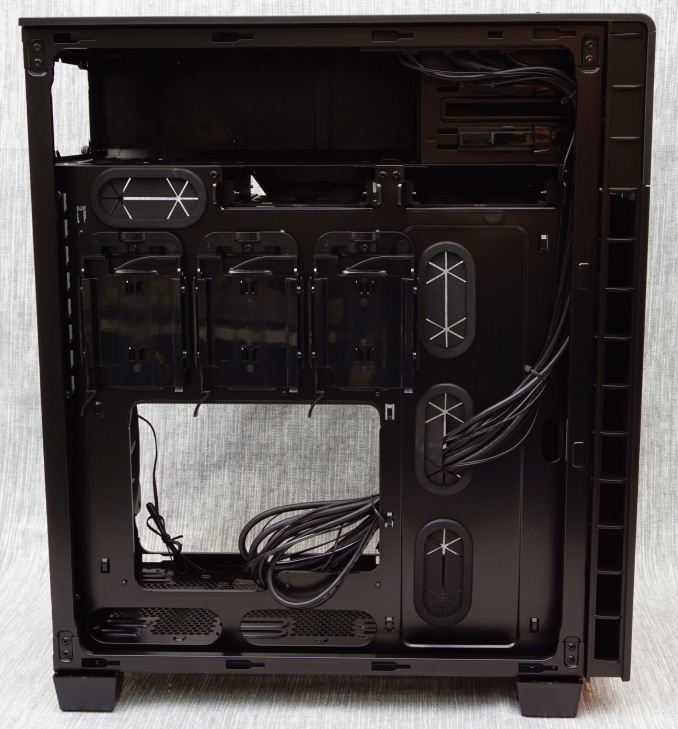

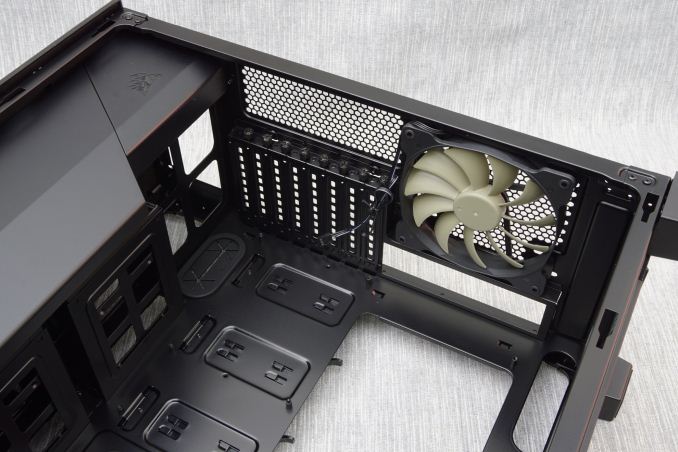
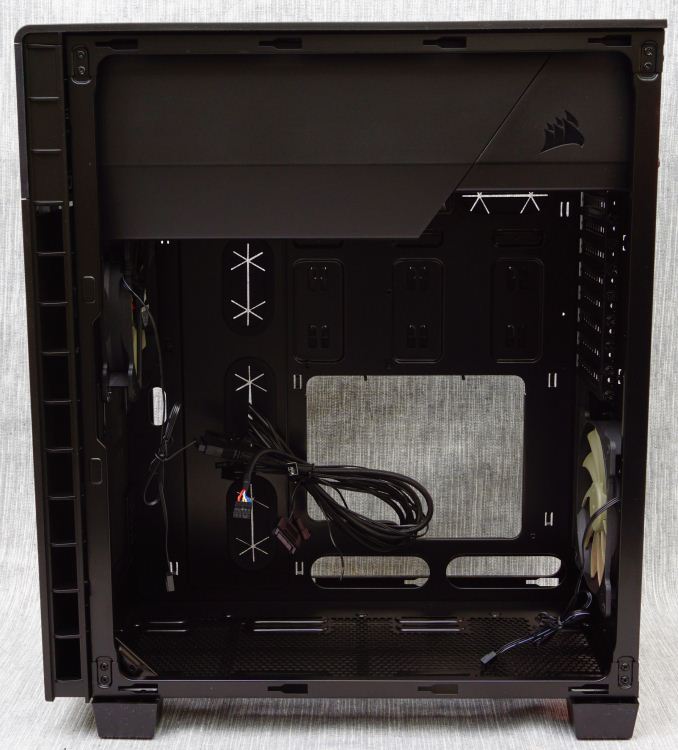
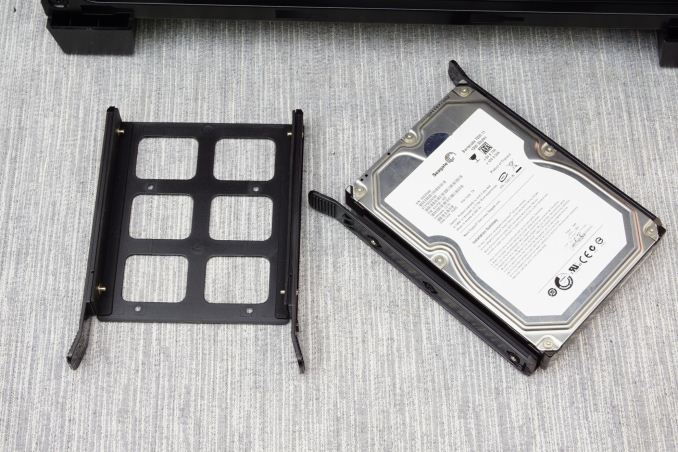
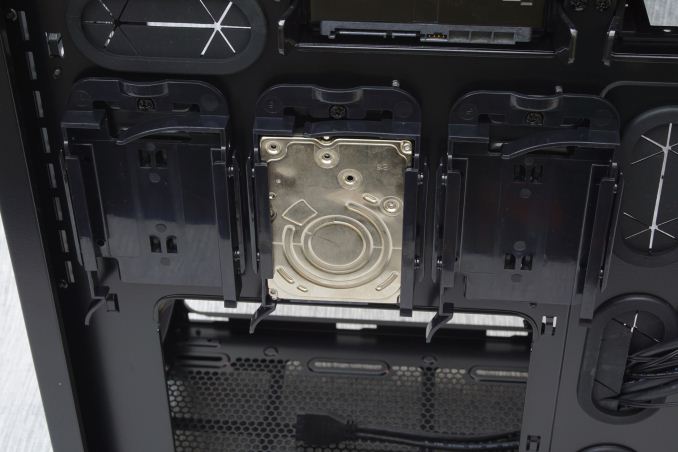

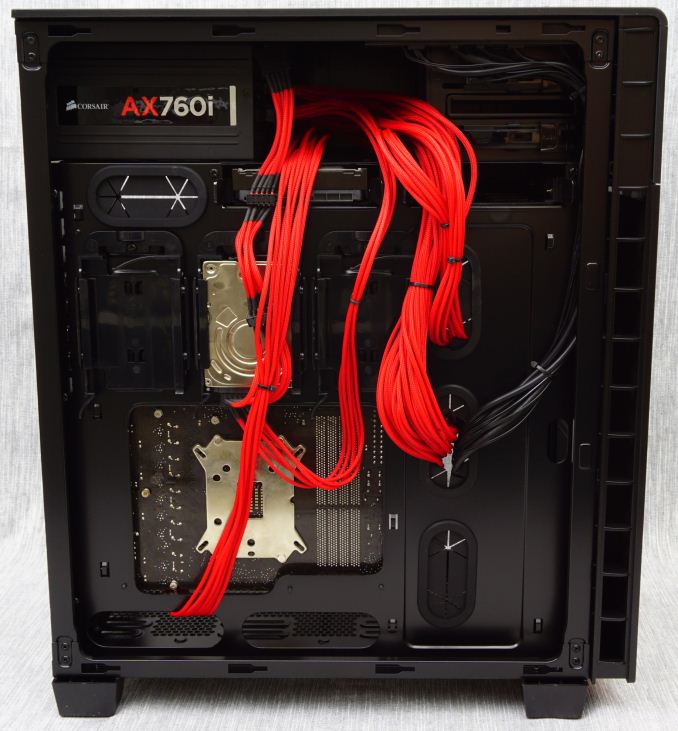








46 Comments
View All Comments
prisonerX - Monday, September 12, 2016 - link
Who was the genius who shot this black case against a white background with simple metering and without exposure compensation? I can't see a thing.3ogdy - Monday, September 12, 2016 - link
Everyone and their momma talking here about the reasons why PSU are bottom-mounted nowadays instead of having them top-mounted.The real reason for putting the PSU on the bottom of the case is to make way for big water cooling systems to properly fit and grab air from a place close to the CPU. They first put them on the back of the case, some chose the front, right underneath the HDD cage and behind the front intake fan (e.g. Alienware Predator 2) and now the trend is to avoid running tubes all over the case and thus put the (double) radiators on the top of the case.
Putting the PSU farther from your ears makes the computer seem more silent, unless your WC pump and fans are on fixed to the top panel...then not so much. Oh well, that's what Noctuas are for.
m16 - Tuesday, September 13, 2016 - link
That's not an original design, it's more of an old school design. I prefer the bottom/separated compartment design, but I can see the draw to it being on top.Corsair hassle really good cases, but I'd wager that my favorite cases are their bigger ones for expandability, and the smallest ones for space saving reasons.
Most if not all of the carbide series are pretty elegant if I must say so. I have had two and I highly recommend them to those who want an unconscious case.
Dustin Sklavos - Tuesday, September 13, 2016 - link
Figures E. would get what we were trying to do with this case. ;)The core concept and layout of the design is mine, but the engineering, ID, and all the details that went into this were part of a larger team as most products are here at Corsair. But if you ever wanted to know what kind of case a former case reviewer might design, this is an example.
When I reviewed cases, the main issue with silent cases was airflow. Their airflow was often so mediocre that it tended to cancel out any benefits to the silent design. Flipping the interior had multiple advantages:
1. Allowed the use of extensive liquid cooling in the "top" (now bottom) of the chassis.
2. Allowed us to put the PSU and 5.25" bays on the same plane.
3. Allowed us to seal off the top of the case, preventing noise from escaping.
As a sidenote, in our thermal testing we found that the third fan barely affected performance but did affect noise, which is why we leave it spare.
Thank you for the positive review. :)
Butioncerhat447 - Tuesday, June 12, 2018 - link
the expiry day, the CVV code as well as your email address https://mypremiercreditcard.me/ To access a credit card declaration at mypremiercreditcard.Edward577 - Wednesday, June 20, 2018 - link
The AMAZING newer version of the 7300. https://www.mixcloud.com/TopRatingBeardTrimmer1/ A man that is well groomed undoubtedly puts http://beardtrimmerulitmate.soup.io/post/655837248... the beard trimmer reviews you will see on https://shopbeardtrimmer.squarespace.com All trimmers of a good enough top quality https://canvas.instructure.com/courses/1341594/ass... that have disposable batteries. http://beardtrimmerrating.wikidot.com/ you have a brief beard, bristle.